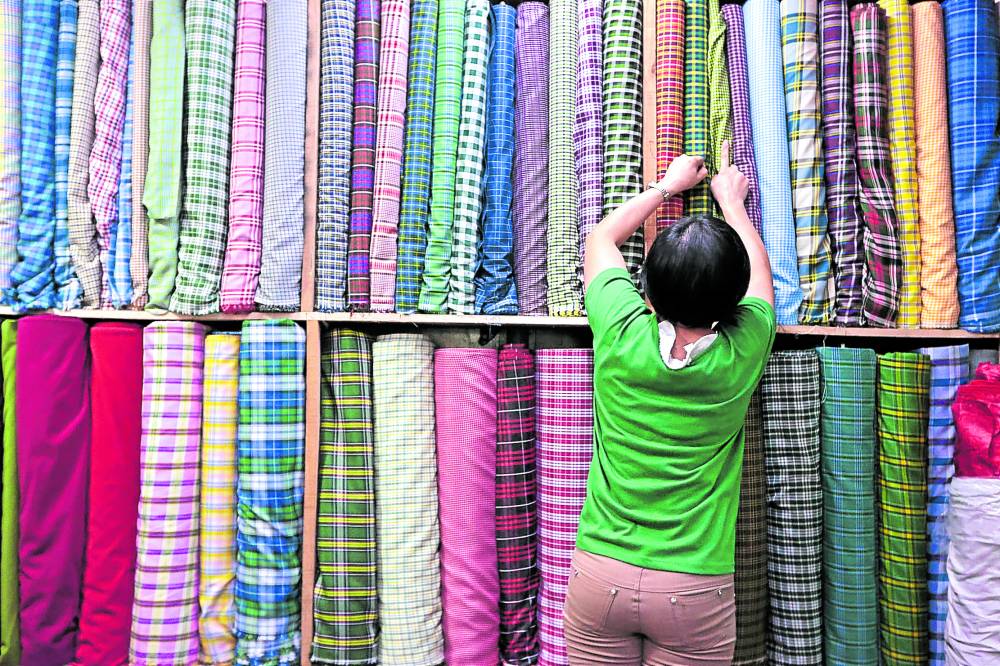New textile standards eyed for adoption by government – Philexport

In this October 17, 2022, photo, 46-year-old Rose Crisostomo fixes the display at a textile stall at Commonwealth Market in Quezon City. – The Philippine Exporters Confederation, Inc. (Philexport) says the government is recommending the adoption of new standards on textiles covering various tests for the color fading resistance of these products. INQUIRER/GRIG C. MONTEGRANDE
The Philippine Exporters Confederation, Inc. (Philexport) said the government is recommending the adoption of new standards on textiles covering various tests for the color fading resistance of these products.
According to the group, the Department of Trade and Industry’s (DTI) Bureau of Philippine Standards (BPS) is seeking feedback from stakeholders on recommendations to follow several measures as they received a bulletin from the government body informing them of five international standards on textiles published by the International Organization for Standardization (ISO) intended for adoption under the Philippine National Standards (PNS).
“The adoption of international standards as [PNS] is in line with good standardization practice and is consistent with the Philippines’ commitment to the World Trade Organization Technical Barriers to Trade (WTO TBT) agreement,” the BPS said, as quoted by the export-oriented trade group.
READ: Free trade with South Korea to boost Philippine textile exports
The following are the five new international standards on textiles by ISO that are recommended for adoption under PNS:
Article continues after this advertisement- ISO 105-B02:2014, which specifies a method intended for determining the effect on the color of textiles of all kinds and in all forms to the action of an artificial light source representative of natural daylight.
- ISO 105-C06:2010, which sets out methods intended for determining the resistance of the color of textiles to domestic or commercial laundering procedures used for normal household articles using a reference detergent.
- ISO 105-E04:2013, defining a method for determining the resistance of the color of textiles to the action of human perspiration.
- ISO 105-X12:2016, which specifies a method for determining the resistance of the color of textiles of all kinds to rubbing off and staining other materials.
- ISO 6330:2021, which defines domestic washing and drying procedures for textile testing.
READ: Garment exporters call for construction of textile mills
Article continues after this advertisementAll five are tests for color fastness, the property of colored materials to resist fading and running when exposed to various environmental situations.
The BPS said the adoption of these standards in the Philippines will facilitate “immediate access to international standards by the local companies, industries, academe, consumers and other stakeholders.”
Interested stakeholders are encouraged by the BPS to send their inputs or concerns to their 1BPS portal account in the website, standardsph.dti.gov.ph, on or before December 2.